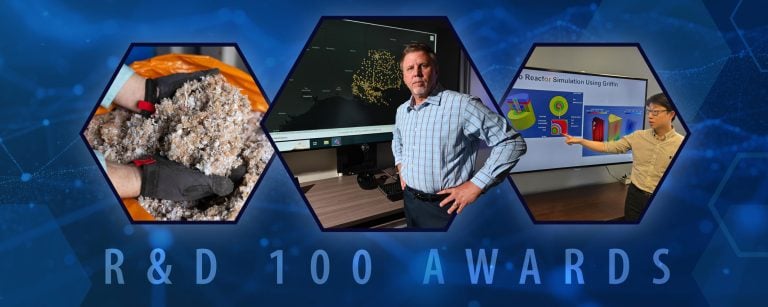In the last 20 years, Americans have made a dramatic shift in how they buy things. Instead of hopping in the car and shopping at retail stores, consumers have moved toward purchasing items online and having those items shipped to their homes.
And those consumers want their packages fast. Online retailers are increasingly offering their customers two-day delivery, and even same-day delivery in some cities for items such as groceries.
It’s no surprise then that several of the nation’s largest retailers and package shippers are testing drones as a quick way to deliver packages.
But before delivery drones go mainstream, industry must overcome a number of regulatory, social and technical challenges, including questions about safety, privacy and energy usage.
At Idaho National Laboratory, researcher Victor Walker is putting questions about energy use in delivery drones to the test. INL is the Department of Energy’s designated lab for unmanned aerial vehicle (UAV) research and testing.
The drone study is part of DOE’s Energy Efficient Mobility Systems (EEMS) project, a larger effort to understand the energy impacts of new mobility technologies. Within the EEMS project, the SMART Mobility Laboratory Consortium is a multi-laboratory collaborative dedicated to further understanding the energy implications and opportunities of advanced mobility solutions.
The multimodel transportation pillar of the consortium analyzes freight delivery technologies with an emphasis on the first mile and last mile of package delivery.
“We have a lot of drones out there, but most have not been tested delivering packages,” Walker said. “Many people have assumed that drone energy would be free, but we didn’t have a good idea of how they would be used or how much energy they would need.”
He recently accepted an invitation to lead a panel session on the topic at the 2018 Intelligent Transportation Systems conference in November. As part of the panel, he’ll share the research results he gleaned with the help of some Cheez-It boxes.

Why Cheez-It boxes? Walker is known throughout INL as an aficionado of the cheese-flavored snacks. His office is a Cheez-It monument of sorts, complete with a collection of empty boxes, many featuring special edition themes or discontinued flavors.
So when it came time for Walker to test how drones delivered packages under various conditions, the mock cargo was easy to pick.
He headed out to the Idaho desert with his team and set up experiments using DJI Matrice 600 Pro Hexacopters, 22-pound drones with six rotors that can take off with up to 15 pounds of cargo and fly at a top speed of 40 miles per hour.
Walker then set up ways to carefully measure several parameters of drone energy use including how much energy the batteries used and how much energy each motor was using during the flights. He then measured how well the drones performed under certain scenarios.
The idea was to mimic how drones might be used in the field. Because many drones come with some degree of automation, one potential use is so-called “last mile delivery,” where a delivery driver sends a drone with a package in one direction, while she goes another direction in the vehicle.
Walker explored this concept by sending drones carrying no packages and drones carrying 5-, 10- and 15-pound packages of Cheez-Its up 50 and 100 feet for hover tests, and along a one-mile route at different speeds, either 17 or 30 miles per hour. Walker’s team gathered data at different points along the delivery route.
Some of the findings came as a surprise. For instance, it turns out that drones take a significant amount of energy to fly, especially when carrying packages. In fact, a drone takes about the same amount of energy to deliver a single package one mile as an electric car (which could hold several packages) takes to drive the same distance.
Of course it came as no surprise that flying around with heavier packages and flying at higher heights both consume more energy than light packages at low heights. And any time spent hovering also wears down the drone batteries.
But unlike cars, Walker found that the faster a drone flies, the less energy it uses, simply because it spends less time in the air.
For Walker, these preliminary findings are just the beginning. There remain plenty of unanswered questions about the effects of drone type, altitude, temperature and wind to answer before the energy requirements of delivery drones are fully understood.

And industry is interested. UPS has expressed interest in Walker’s work, and more companies could follow.
“There needs to be some attention paid to drones, not just in the FAA world, but in the energy world,” Walker said. “People want their packages faster and cheaper. We’re shifting to that kind of environment.”
Where aviation and ground transportation used to be two separate sectors of the transportation industry, drones are changing that paradigm, said Boryann Liaw, manager of INL’s Energy Storage and Advanced Vehicles Department.
“This is an unchartered territory in terms of the mobility and energy markets,” Liaw said. “Victor’s work is beginning to unravel a mystery in the emerging e-mobility and e-commerce world that few have paid attention to.”
The U.S. Department of Energy’s Energy Efficient Mobility Systems (EEMS) project envisions an affordable, efficient, safe and accessible transportation future in which mobility is decoupled from energy consumption. The EEMS project conducts early-stage research and development at the vehicle, traveler and system levels, creating new knowledge, tools, insights and technology solutions that increase mobility energy productivity for individuals and businesses.
The SMART Mobility Consortium is the EEMS project’s primary effort to create tools and generate knowledge about how future mobility systems may evolve and identify ways to reduce their energy intensity. It also identifies research and development gaps that the EEMS project may address through its advanced research portfolio and generate insights that will be shared with mobility stakeholders.





